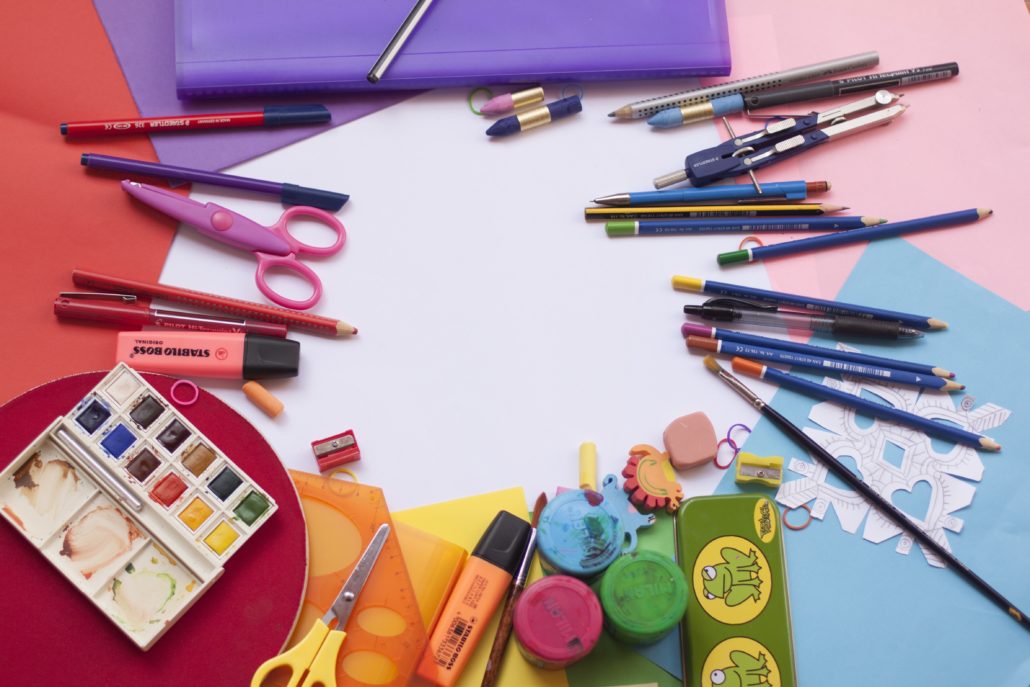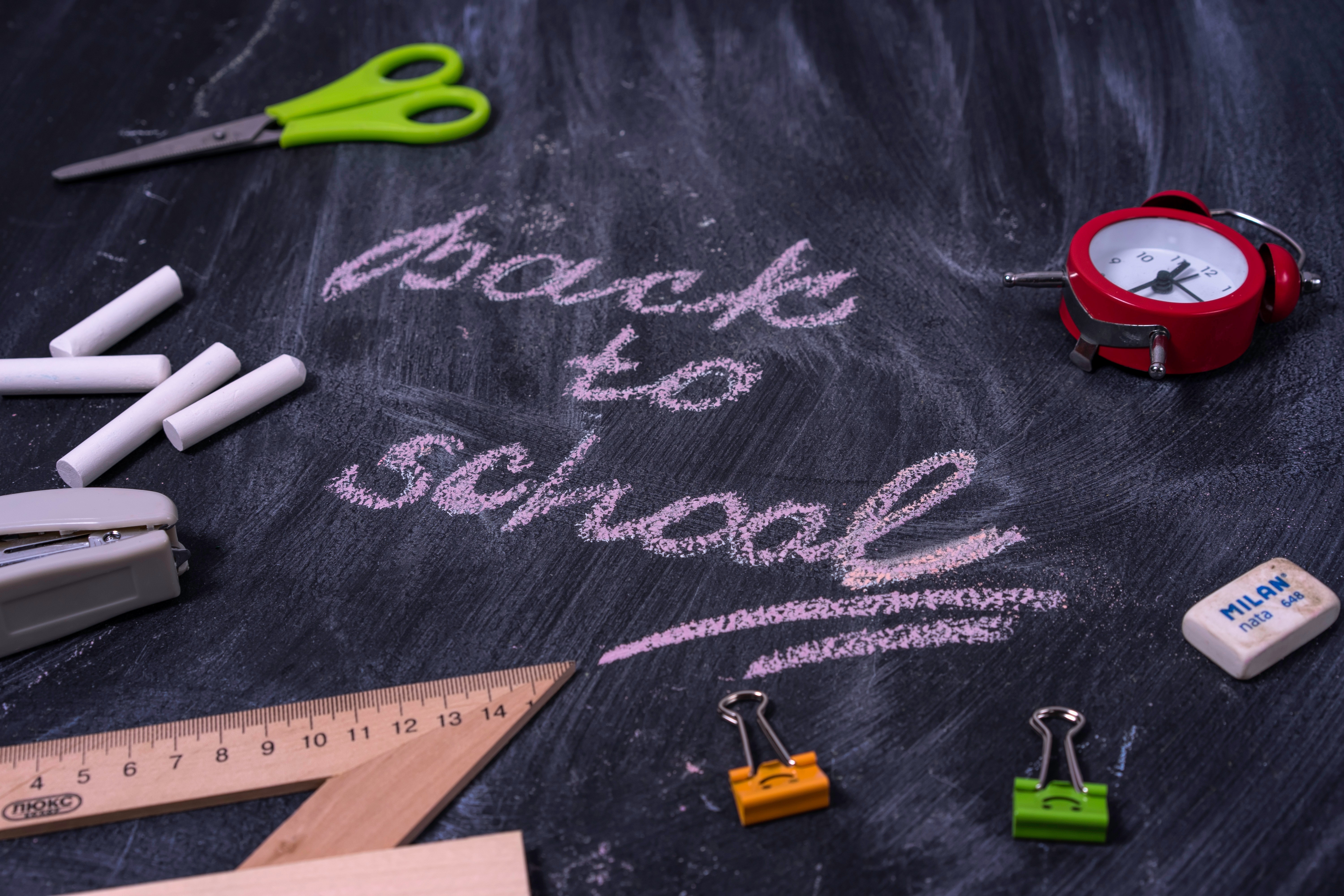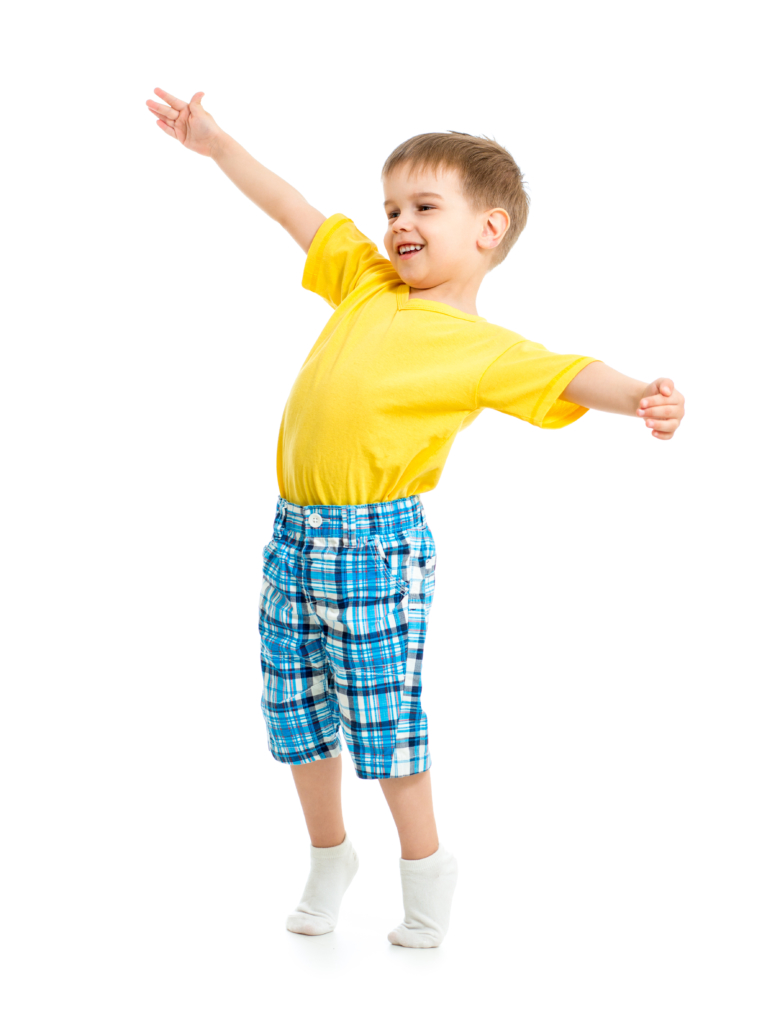

- Call 908 543 4390
- Email
- Dr.Joni Redlich PT,DPT



WHY “Good Posture” is So Important for School!
by Dr. Ali
We are always hearing about “good posture” and how important it is for us. We hear “sit up straight” and “don’t slouch” often, whether you are saying it to your kiddo or you hear another parent or a teacher saying it to another kiddo. What is never partnered with these phrases is WHY this is so important. I wish that as a kid, somebody told me why sitting up tall was so important, because if they had, maybe I would have done it more instead of slouching!
Sitting with supported, aligned posture is SO important for every body, and for all mobility statuses. If you are curious as to WHAT good posture looks like, click HERE to read a blog post all about appropriate postural alignment and for some solutions to help with sitting posture throughout the school or work day.
It’s also important to remember that a “good posture” is also one that you’re not in for too long! We want to empower our kids to listen to and respond to what their bodies need- that may be using a standing desk for periods of the day or sitting on a wedge to support a more traditional aligned upright posture. However, we do want all of our kids to have the flexibility and postural control to sustain an actively aligned posture for periods of time.
SO, without further ado, we are here to tell you all about one of the BIGGEST benefits of sitting with nice, spinal alignment. And what is this benefit you ask? BREATHING! Sitting with your spine in a properly aligned position makes sure that your ribs are in the right places to allow for proper expansion when we breathe in. Sitting with our core activated, with our ribs and spine in a proper alignment ensures that your diaphragm (the big muscle that attaches to your ribs and sits below your lungs) is in the perfect position to contract and relax for breathing. With your ribs and spine in the right position, your lungs have enough room to expand and let in all the air they can. Then your breathing muscles (the diaphragm and more) are in the best position to bring in all that air (aka a win win)! When you sit up TALL, your breathing is not SMALL!
So, WHY is breathing efficiently important for effective learning throughout the school day? Breathing in big, natural breaths gets oxygen into our lungs, which then gets taken all over the body. Our brain needs oxygen to think all the thoughts we need for our school lessons. The heart needs oxygen to keep beating with a strong and healthy rhythm. The arms and legs need oxygen to fuel their muscles to move and groove or patiently raise a hand to answer a question. The stomach and intestines need oxygen from the blood to digest your yummy lunch so you can turn it into energy! Basically, the WHOLE body needs oxygen to keep on keeping on and to continue doing what each part is supposed to do!
The body needs oxygen for SO many things! And not just any amount of oxygen, but the right amount of oxygen. If the lungs fill with too little oxygen, then the body is only working off of what it has, and maybe compensating for the energy it is missing. You may feel tired throughout the day, with lots of yawns and trouble focusing. This is something we definitely want to avoid when our kiddos go back to school! When they go to school for the day, we give them a hearty breakfast in the morning to make sure they have enough energy to last them until lunch time and a hearty lunch to get them through the rest of the day. BUT both of these amazing meals are not going to help them combat the tiredness they will feel if they are not breathing right all day long at school because of poor posture.
Good posture and optimal breathing supports emotional regulation, by increasing access to the parasympathetic nervous system, the opposite of our “fight or flight system.” It impacts a child’s ability to use their eyes, especially for desktop work, but also the ability to move back and forth between looking far at the teacher and looking close at desk work. It also impacts handwriting and other fine motor skills.
Our ability to sustain our posture over a long period of time is not only the result of the chair we are sitting on but also our body’s ability to sustain “good posture” using our muscles and sensory system. Some kids have a hard time with the muscular endurance or strength required for good posture. Others have a hard time sensing where their body is when sitting and thus sit in a very relaxed, forward curved posture. Some kids have a combination of both of these factors (and typically this is the case). If you notice your child sitting with slouched posture at home, you can probably assume they are sitting that way at school. If they are sitting that way at school too, they are not breathing in the most efficient way and may not be getting the proper amount of oxygen throughout the day for peak concentration! If you feel like this is your child, it is not something that can’t be helped and improved with physical therapy! Through physical therapy, your child can learn to support their body with supported posture and build the muscle strength and endurance to hold that posture for much longer stretches of time. If you feel like your child spends a large part of the day slouching when they sit, do not hesitate to call us at KidPT to schedule a free Discovery Visit so that we can screen your child to see if PT is appropriate for them, and if we are a good fit, to help them learn to sit with ease!
 It is almost back to school time! You must have a lot of things on your plate between enjoying the last few glory days of the summer and also preparing for the start of a new school year. So we have made it easy for you with a quick guide of things to consider when purchasing a backpack.
It is almost back to school time! You must have a lot of things on your plate between enjoying the last few glory days of the summer and also preparing for the start of a new school year. So we have made it easy for you with a quick guide of things to consider when purchasing a backpack.
Although the stores are stocked with bookbags with cool colors, designs, and beloved cartoon characters, try to avoid only considering the style and appearance when purchasing a bag for your little ones. Research has shown that heavy and inappropriately fitting backpacks can alter posture and alignment and place stress on the musculoskeletal system leading to neck, shoulder, and back pain or injuries with repeated use. Our bodies are complex and dynamic with many systems working together. When one area or system is stressed or overloaded, the body adapts with compensations in other areas. Unfortunately, repeated use of poorly fitting or heavy backpacks can lead to inappropriate postural alignment compensations and stress down the structural chain of the body. Since bookbags are used by our kiddos for a significant time throughout the school year, it is important to take steps to ensure appropriate use to avoid injury or compensations.
A few key concepts to follow when choosing a book bag are to increase the amount of contact area between the child and bag, minimize and distribute the weight, ensure symmetry, and keep the load as close to the trunk as possible. Below are characteristics to look for and practical tips to assist you on this back to school endeavor.
Optimal backpack characteristics:
Optimal backpack use and tips:
Signs of poor fit and use:
Please do not replace medical advice from your primary care physician, orthopedist, or physical/ occupational therapist with the information presented in this blog post. Always consult your medical team with medical advice.
https://www.choosept.com/resources/detail/backpack-safety
https://cdn.ymaws.com/www.ccapta.org/resource/resmgr/imported/MCBackpackSafety.pdf
by Dr. Ali
This week we are going to get BUGGY! There are two different types of people out there, those who think bugs are really cool and helpful and those who think bugs are the scariest beings to walk on earth. Although bugs may not be some people’s favorite things, there are so many out in the summer, doing their little buggy jobs here and there. They are all so different from each other in shape, color, and especially in HOW THEY MOVE! Because of this, we thought it would be fun to bring you and your kiddos BUGGY MOVES this week!
The Butterfly Flap: 
The Super Ant Pick Up:
The Jumping Spider: 
The Scooting Worm:
We hope you enjoy these summer bug-tastic exercises! We know you are “bugging” out that summer is almost over (so are we) but we are trying to enjoy every last bit. Happy summer everybody (and every buggy), have fun squirming, jumping, and flying like our little friends do!

It is SUMMERTIME and with summer comes many fun outdoor activities.
One of these is Swimming!
Swimming is great for any kiddos who have low tone, neuromuscular conditions that affect movement strength or control, and for conditions that affect one’s joints. For any child who falls in one of the diagnostic categories listed above, moving in the water helps because buoyancy (aka what helps you float a little bit when you swim) takes away some of the gravity that typically weighs us down when we move! Though we love gravity to help keep our feet grounded when we move around on the earth, it does make it more difficult for kiddos who have low tone or neuromuscular related weakness to perform tasks that require them to move against gravity or require their muscles to have to sustain endurance against the forces of gravity throughout the day. For children who have a condition that affects their joints, the buoyancy of the water relieves a portion of the downward pressure exerted on their joints with every step on land.
Now, while buoyancy makes time in the water a little easier than time on land, we can’t forget about the other properties that make exercises in the water a true workout. Water is more viscous than air, meaning it is thicker and harder to move through. Not only is water thicker than air BUT water molecules love to stick together too, a property called cohesion. When the molecules stick together, again it makes them harder to move through than air, because as we are moving through water, we are resisting the force required to maintain the bonds between water molecules. I’ll bet you never thought you were breaking bonds every time that you go for a swim, but it’s neat right?!
That said, here are some activities that your kiddo can do in the shallow end of the pool (with supervision of course) that will help strengthen them for their time as a landlubber (aka when they are on land again):
Want to learn about more fun exercises for Summer? Visit our instagram @KidPT or check out more of our blog posts!

by Dr. Ali
Toe walking is something that is frustrating for many parents and their kids and our parents are often worried about their child’s balance or overall joint health of their feet and ankles as they age. The children are frustrated with always being told to walk on flat feet when they feel like they really can’t control how they are walking! We often hear “They’ll walk on flat feet when they’re thinking about it, but as soon as they stop thinking about how they are walking, they are back up on their toes again!” We hear this over and over again from parents. If you have been to another physical therapist for your child’s toe walking, often they just stretch, stretch, stretch them… your child is miserable and in pain AND there is often no change in their toe walking.
We look at toe walking a little differently. The body is a movement system if the system is not moving the way it is designed to, there must be a reason! The important question we therapists always ask is WHY! When a child walks on their toes, they are using a less efficient gait pattern than when a person walks with a heel to toe gait pattern. Our bodies are SMART and they are always trying to optimize their own movement efficiency naturally so that we can move with EASE. Basically all bodies take the path of least resistance, no matter what! That said, if a child is toe walking, it is DEFINITELY meeting an underlying need in their body, or else, they wouldn’t be walking that way. Toe walking IS their body’s path of least resistance. There is something blocking their body from walking with a heel toe gait pattern and making toe walking the easy way to move. THIS is where we pediatric PTs come in! There are many needs that their body might be trying to meet and we are here to help them fill in the little gaps that their body has not been able to do alone (up to this point).
Postural and Biomechanical
Sometimes, the origin of a child’s toe walking is related to their alignment and the way a child uses their core. When this is the primary reason for a child’s toe walking, we will often see the child leaning forward, belly out, with their whole center of mass (aka the middle of their body) positioned forward over their feet. If this is the primary driver of a child’s toe walking, then they need to re-learn how to use their belly muscles and how to re-align and control their whole body while moving before any changes are seen at their feet and ankles.
Sensory
Sometimes toe walking can have a large contribution from the sensory system. Within this realm there could be multiple different sensory needs their toe walking may be meeting. Let’s look at these different needs a little more:
Neuromuscular:
-Sometimes children who present with high tone or low tone can toe walk based on how their system regulates the tone in their muscles. High tone is frequently seen in children with Cerebral Palsy or children who have had a Traumatic Brain Injury, and in this sense, when the child moves or tries to walk, the tone in their calf muscles may increase to the point where they are walking up on their toes. In the case of low tone, similar to why children with impaired proprioceptive systems might toe walk, the child might be looking to stabilize joints which are more mobile. By toe walking, children with low tone are increasing their overall joint stability and thus the stability of their body while they move. Neuromuscular contributions to toe walking are more complicated as they require more time, patience, and retraining of the way the child regulates their tone while they move (which is often an automatic process and is only slightly understood by the medical community). The main reason why toe walking can be troublesome for this population, especially in the case of high tone, is that having the foot and ankle positioned in a pointed position while moving and likely while standing or resting too can create something called a contracture. A contracture is the term used when a joint loses movement in a certain direction to the point where it affects the intended function of that joint. When a contracture gets too severe, it might cause skin break down while a child is walking in certain shoes, which could lead to an infection down the line. Contractures are very hard to reverse once they occur and prevention is typically the preferred way to go!
If ANY of these descriptions (or a combination of these) sound like your child, they may benefit from physical therapy with the knowledge of how to treat idiopathic toe walking. Gone are the days of “stretching three times a day will make it better” because if you have done this with your child you KNOW that 9/10 time this does not work. At KidPT we treat idiopathic toe walking from the tummy out to the tips of the toes and don’t look over the potentially crucial contributing sensory factors. We will work with you and your child as a team to put the puzzle pieces together (and oh yeah did we mention they will have FUN while doing it). Stop stressing and start getting answers, come in to KidPT today for a Free Discovery Visit and see if WE are the right fit for YOU!
